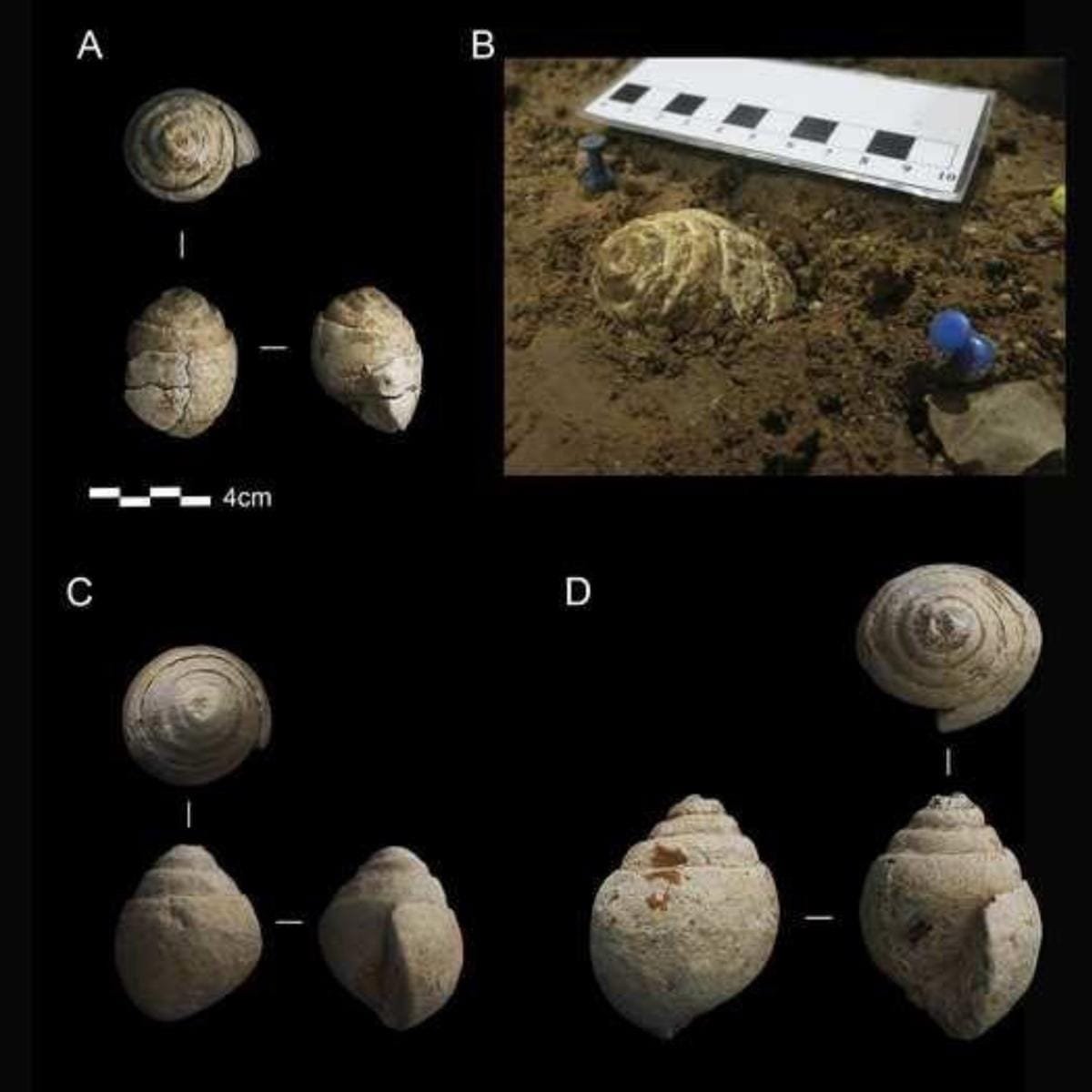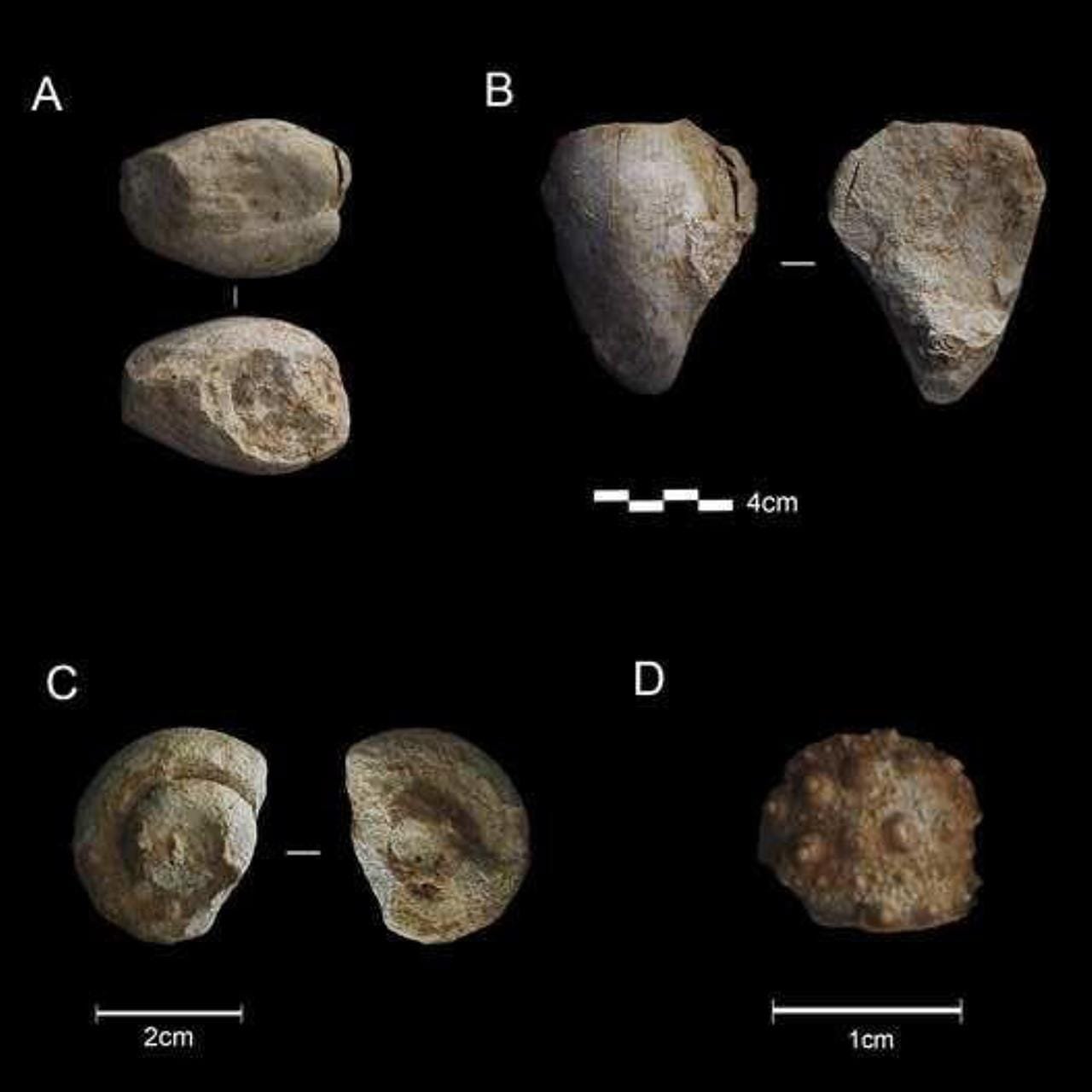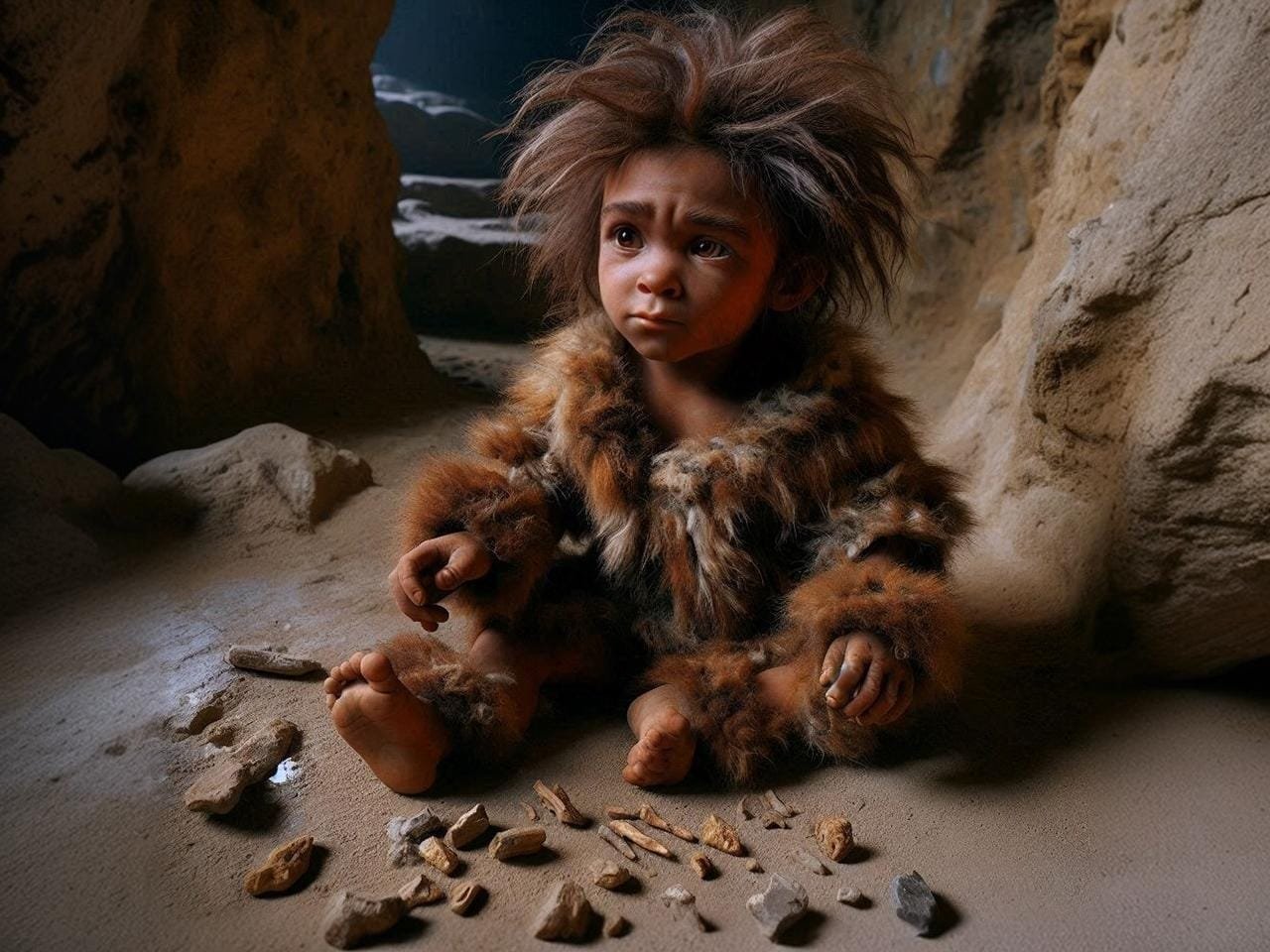Recent findings from the Prado Vargas Cave in northern Spain have unveiled a remarkable aspect of Neanderthal behavior: their apparent inclination toward collecting non-utilitarian objects, much like modern humans. A study led by Marta Navazo Ruiz of the Universidad de Burgos and published in the journal Quaternary reveals that 15 marine fossils, dating back 39,800 to 54,600 years, were intentionally gathered and brought into the cave.
 Marine fossils from the Prado Vargas Cave in Spain. Credit: M. Navazo Ruiz et al., Quaternary (2024)
Marine fossils from the Prado Vargas Cave in Spain. Credit: M. Navazo Ruiz et al., Quaternary (2024)
The fossils, primarily mollusks and echinoderms, were discovered in Mousterian Level 4 of the site. Taxonomic analysis indicates the presence of species such as Tylostoma, Granocardium productum, and Pholadomya gigantea. Except for one fossil that showed evidence of being used as a hammerstone, the rest bore no signs of practical use, ornamentation, or modification. Their deliberate transport—often from sources over 30 kilometers away—suggests a deeper motivation, possibly tied to symbolic, aesthetic, or social practices.
The researchers propose several hypotheses to explain why Neanderthals collected these fossils. These include aesthetic appreciation, symbolic representation, or social functions such as gift-giving and cultural idenтιтy reinforcement. “These fossils can be understood as evidence of an artistic interest or an attraction or curiosity for the forms of nature,” the study noted.
Interestingly, the researchers speculate that children might have played a role in this activity. Studies on modern humans suggest that collecting behaviors emerge between the ages of 3 and 6 and are often driven by a sense of wonder and exploration. Given the remains of Neanderthal children found in the Prado Vargas Cave, their participation in this early form of collecting cannot be ruled out.
 Marine fossils from the Prado Vargas Cave in Spain. Credit: M. Navazo Ruiz et al., Quaternary (2024)
Marine fossils from the Prado Vargas Cave in Spain. Credit: M. Navazo Ruiz et al., Quaternary (2024)
Alfonso Benito Calvo, a geologist at the Centro Nacional de Investigación sobre la Evolución Humana (CENIEH), highlighted the broader implications of the discovery: “Carrying these fossils to the cave was deliberate, systematic, and reiterated, showcasing Neanderthals’ interest and effort in collecting. They have become the earliest fossil collectors known in our evolutionary history.”
The findings challenge the long-standing stereotype of Neanderthals as less cognitively advanced than Homo sapiens. Archaeological records from other sites also support the view that Neanderthals engaged in complex behaviors. Examples include collecting bird feathers and claws for decoration, crafting perforated shells into ornaments, and depositing animal skulls and horns in symbolic arrangements.
 The researchers speculate that children might have played a role in this activity.
The researchers speculate that children might have played a role in this activity.
The Prado Vargas collection stands out because of its size—15 fossils compared to the typical one or two items found at similar sites. This discovery reinforces the idea that Neanderthals possessed not only abstract thinking but also a deep appreciation for the natural world.
Beyond collecting, Neanderthals demonstrated numerous advanced behaviors, including burial practices, care for the elderly, and art creation. These behaviors suggest that their cognitive capacities were far more sophisticated than traditionally believed.
More information:Navazo Ruiz, M., Benito-Calvo, A., Lozano-Francisco, M. C., Alonso Alcalde, R., Alonso García, P., de la Fuente Juez, H., Santamaría Diez, M., & Cristóbal Cubillo, P. (2024). Were Neanderthals the First Collectors? First Evidence Recovered in Level 4 of the Prado Vargas Cave, Cornejo, Burgos and Spain. Quaternary, 7(4), 49. doi:10.3390/quat7040049





